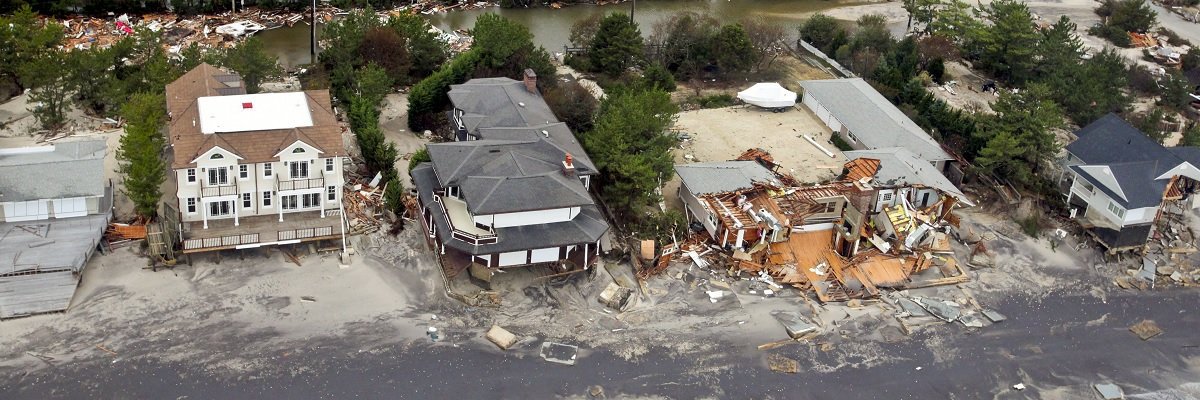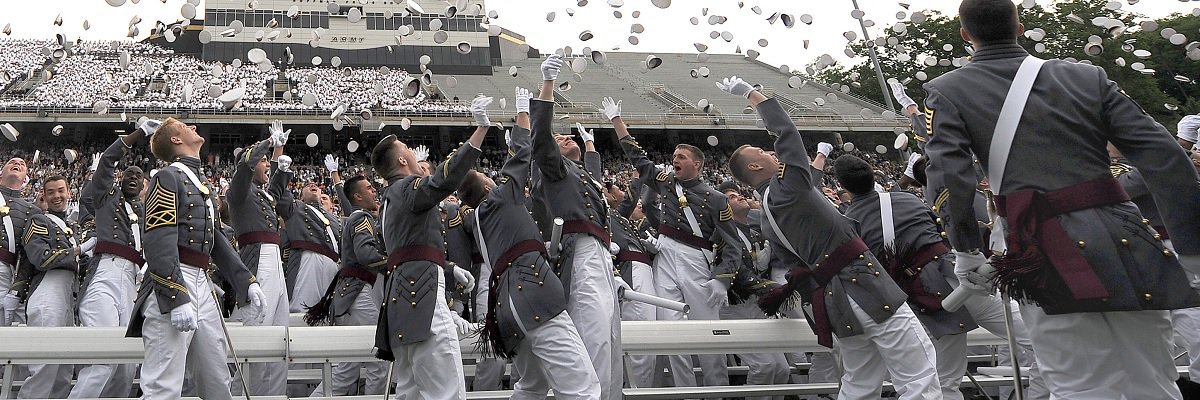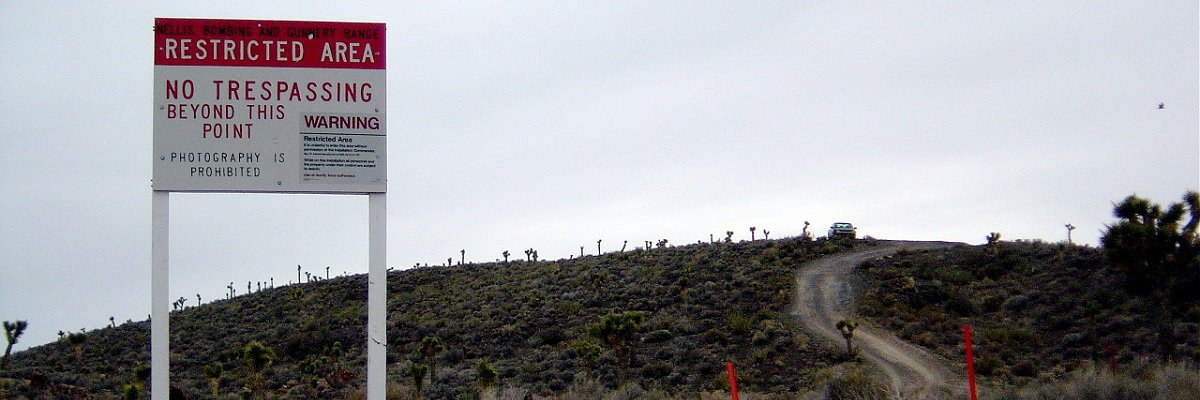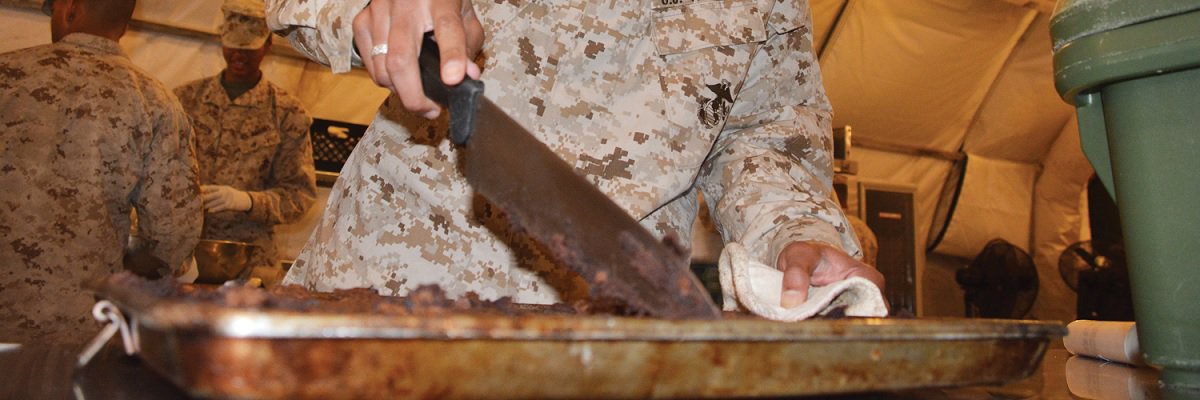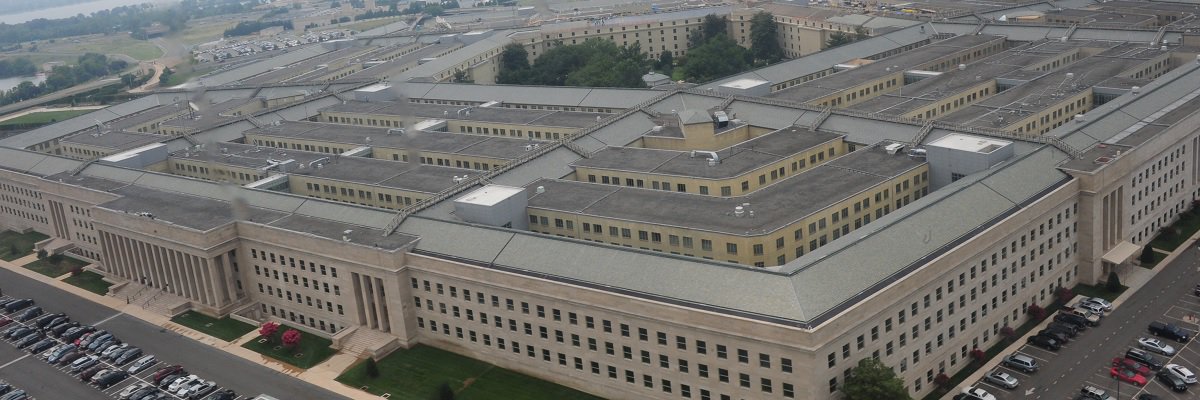Second only to Katrina in cost of its destruction, Hurricane Sandy slammed into the East Coast in late October 2012, wreaking particular havoc on New Jersey and New York.
In a brief and exceedingly blunt two-page analysis of Sandy’s lessons compiled a month after the storm, U.S. Northern Command (NORTHCOM) officials focused on the confusion and inefficiency caused by the military’s abandonment of the federal disaster framework.
Sandy exposed the military’s inadequate logistical preparation for such a large response effort, as federal troops were deployed to storm-ravaged areas before a coordination command structure was deployed to allocate them efficiently. Analysts blamed the “scale and scope” of the Hurricane Sandy for this inefficiency, as well as the time it took “theater sustainment command” (TSC) support units to become operational.
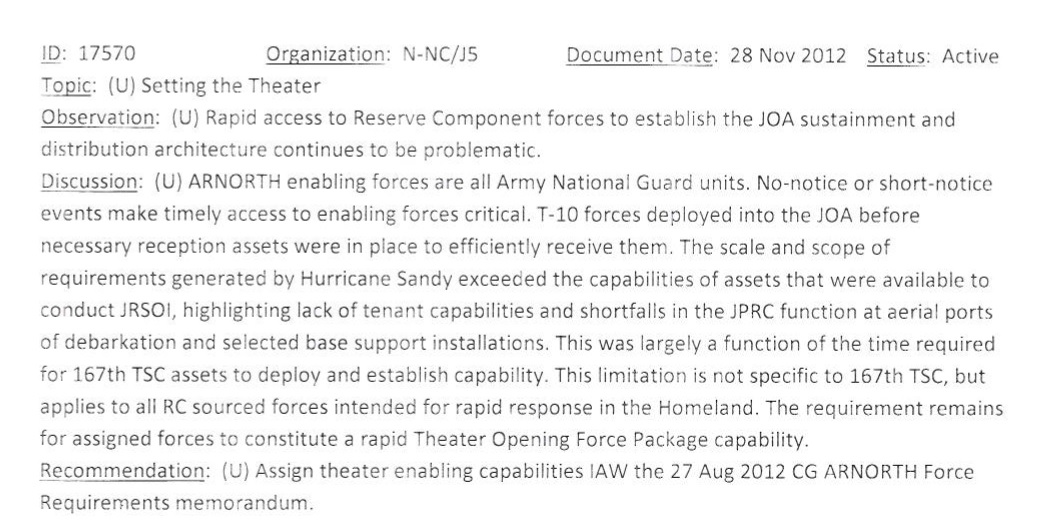
According to NORTHCOM analysts, the military’s coordination was also slowed by the decision to abandon the National Response Framework (NRF). According to FEMA, the NRF is the collection of federal guidelines that “covers the capabilities necessary to save lives, protect property and the environment and meet basic human needs after an incident has occurred.” Like Katrina, Sandy highlighted the “bureaucratic and cumbersome” protocols that assign responsibilities among local, state and federal responders. Thus the analysts called for a review and revision of the NRF to streamline and clarify roles, as well as more widespread education for all responders on who is responsible for what activities during the relief process. The NRF was updated in May 2013 in light of issues highlighted during Hurricane Sandy.

Even with this response gap between NRF prescriptions and realities on the ground, analysts criticized NORTHCOM’s decision to abandon federal protocols for division of tasks. In particular, they argued that the order from NORTHCOM Commander Charles Jacoby to “Go get missions” was detrimental to unity of effort and coordination to assist those hardest hit by the storm.

While the NRF may not have been adequate to Sandy’s particulars, they advised, some manner of replacement parameters were needed so all agencies some common ground rules. Further, the analysts warned that “rushing to the sound of the guns may be emotionally satisfying or even politically expedient” but that going off-book in this way created inefficiency and “potentially clogs up lines of communication … as forces push forward without being called forward.”

Read the full document embedded below, or on the request page.
Image via Wikimedia Commons
